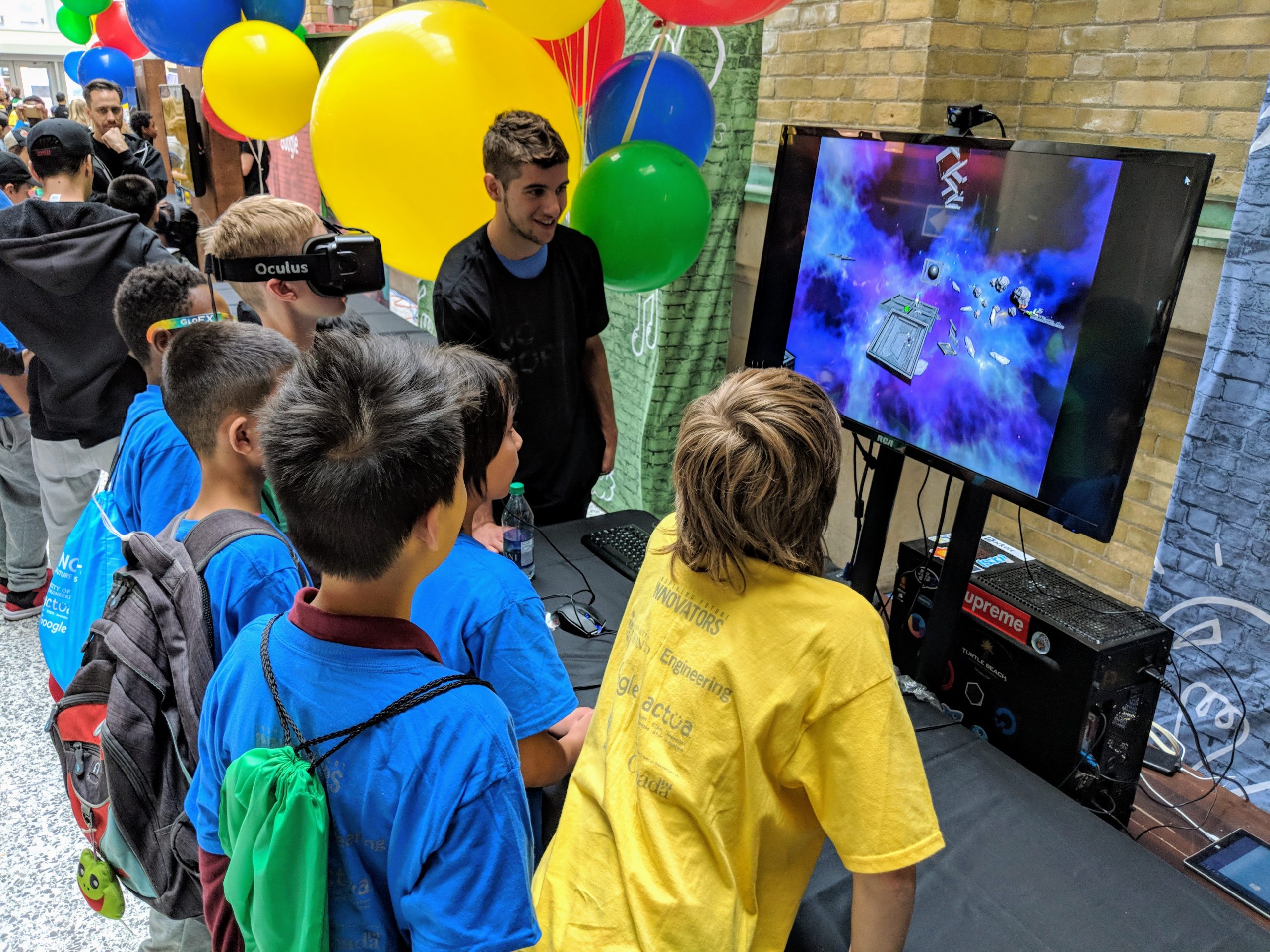Description: Instead of learning in a traditional classroom, what if kids could learn while playing video games? We put that theory to the test by creating educational video games for science, technology and math, including this game where students use virtual reality to learn how to code.
This photo was taken at a UofT-hosted event where at-risk youth made a field trip to try out our educational games. In an age where teachers are using active learning to make their lessons more engaging, what better medium for the technology-savvy generation than educational video games?
Why did you conduct this research? Video games have huge potential as a medium for learning, and my research is exploring the best way to make that happen. Too often a game is educational but not fun to play, or fun but doesn’t teach anything useful. Along with a team of student developers, I have been creating games that bridge this gap by integrating the educational strategies into the game development and subject material into the gameplay to create experiences where players want to learn the material without recognizing that as the goal.
Technique: No techniques to create or modify the image, aside from the auto adjust feature in Google Photos.
Main acknowledgement: Thomas Horga (featured in the submitted image)
Collaborators: Dr. Daniel Zingaro (UTM) and Dr. Tiffany Tong (formerly MIE, currently at Google) Also want to acknowledge the team of student developers (50 in total, sufficient here to name as “the team of student developers”)

